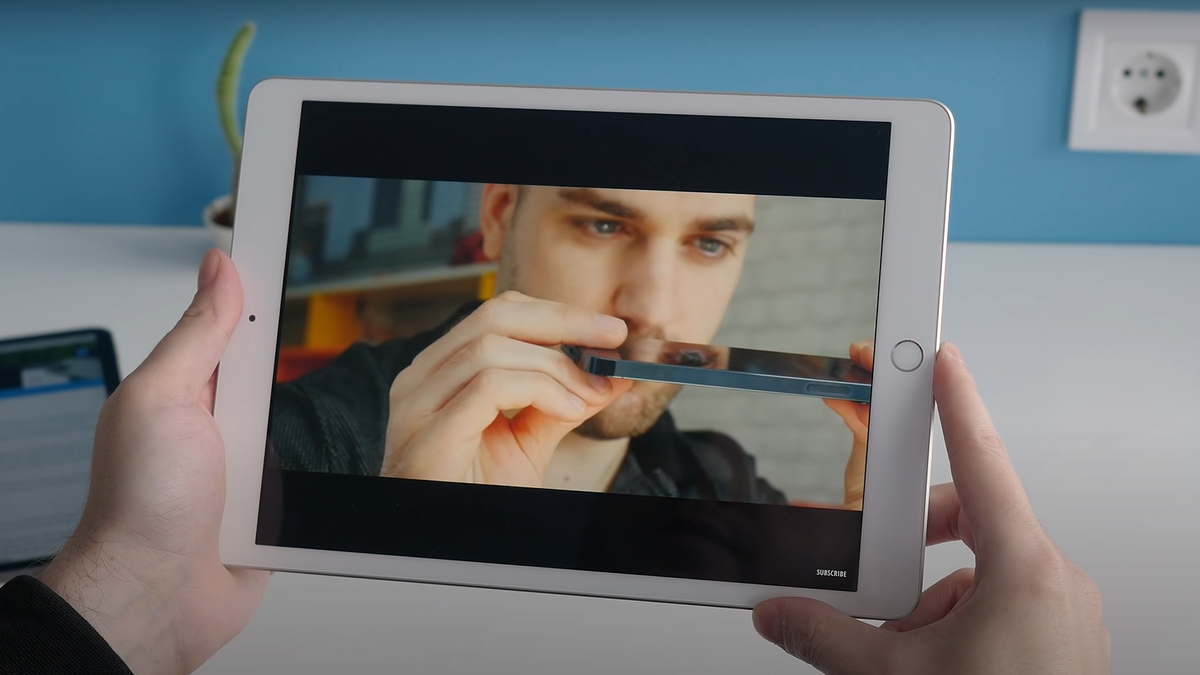Movies have been a source of entertainment for decades and while we are familiar with the idea of watching a movie on the big screen, one aspect of the movie-going experience that is constantly overlooked is the presence of the black box, also known as the letterbox.
Many movies use aspect ratios other than 16:9, which is why Movies Have Black Bars on the top and bottom of the screen. This article explains how to get rid of them if they bother you. Keep reading to find out further.
How Black Bars (Letterboxing) Are A Common Aspect Of The Movie-Watching Experience?
Letterboxing, or black bars, is a common feature of watching movies since they help maintain the original film’s aspect ratio. An essential part of visual storytelling is the aspect ratio or the width-to-height ratio of the image.
Filmmakers also make use of black bars as a creative tool, employing them to improve the film’s narrative, establish a particular visual style, and make for a more engrossing viewing experience.
This is a standard part of going to the movies since it corrects for the disparity in aspect ratios while maintaining picture quality.
How Different Aspect Ratios Were Used For Different Types Of Movies?
Aspect ratios were used differently for different sorts of films and eras in film history. For example, the aspect ratio of a conventional television screen was 4:3 during the silent era.
This was the most common aspect ratio utilized in early cinema since it matched the aspect ratio of the film stock used.
The aspect ratio was adjusted during the sound era to 1.37:1, which is kindly wider than 4:3. This aspect ratio was chosen to correspond with the aspect ratio of the conventional 35 mm film frame used for sound pictures.
During the 1930s and 1940s, this aspect rate was utilized in a number of Hollywood flicks.
How Black Bars Were Used To Adapt The Image To The Screen?
As movies started to be projected on TV and home video, the aspect rate of pictures came mismatched with the aspect rate of the defenses, which is 43.
To break this problem, black bars were added to the top and bottom of the image, which helped to save the aspect ratio of the movie and maintain its integrity.
Black bars on top and bottom of the image were created to adapt the image to the screen because some Films are shot in even wider aspect ratios like 2.391, which is a widescreen format widely utilized by big-budget Hollywood productions.
How The Use of Black Bars Can Affect The Viewer’s Perception?
The use of black bars, or letterboxing, in the film is a curious miracle, one that has the implicit to evoke a range of responses from the cult.
These bars can serve as a tool to produce a sense of absorption, drawing the viewer into the film by framing the image and lending it a cinematic quality.
They can also help in the preservation of the aspect ratio, icing that the film is seen as it was intended by the filmmaker.

Black bars can also prove to be a distraction, diverting from the overall viewing experience. They can make the image on the screen appear lower, and rob the film of its grandness.
One might argue that this is particularly true in the case of larger defenses, similar to those set up in multiplexes.
It’s clear that the use of black bars is a delicate balance, one that requires a nuanced understanding of the medium.
While they may be essential for some films, for others they may serve as nothing further than an inconvenience. Eventually, it’s a matter of particular preference and the type of film in question.
As a cinephile, I believe that the use of black bars can add to the viewing experience, but it’s important to find a balance that works for the viewer and the film.
It’s a question of aesthetics and storytelling, and as always, the ultimate test is in the eyes of the beholder.
Why Are Movies Never Full-Screen?
Movies, as an art form, are created to be viewed in a specific manner- a manner that has been precisely considered and drafted by the filmmaker.
The aspect rate, or the proportion of the range to the height of the image, is an integral part of this vision.
Throughout the annals of cinema history, different aspect ratios have been employed for colorful reasons- from matching the aspect ratio of the film stock to aligning with the standard 35 mm film frame.
Still, when these films are viewed on TV or home video, the aspect ratio becomes mismatched with the screen, leading to what’s generally referred to as” letterboxing” the addition of black bars on the top and bottom of the image.
This isn’t a bare technicality but an essential aspect of the cinematic experience. The widescreen format, for example, is employed to produce a sense of majesty and grand- ness, and letterboxing ensures that this vision isn’t compromised.
Movies aren’t full-screen because they’re created to be viewed in a specific manner, and letterboxing is an essential aspect of conserving the integrity of the film and the filmmaker’s vision. It’s an art form, and art should be viewed in a specific way, not just as a technicality.
How Do I Get Rid Of The Black Bars At The Top And Bottom Of A Movie?
The question of getting rid of black bars, or letterboxing, is one that has agonized cinephiles for decades. It’s a delicate balance, one that requires an exact understanding of the medium.
The first thing to understand is that these black bars are there for a reason- to save the aspect ratio of the film and maintain the integrity of the filmmaker’s vision.

Removing them would be akin to altering a painting or sculpture, it would affect the original cultural intent.
if one is determined to do so, there are many styles that can be taken on. One could try cropping the image to remove the black bars, but this would affect in a loss of resolution and potentially important visual elements of the film.
Another approach would be to stretch the image to fill the screen, but this would affect in misshaping of the image and loss of the aspect ratio.
It’s important to a flashback that these black bars are an essential aspect of the cinematic experience, they’re there to save the integrity of the film, and the filmmaker’s vision.
It’s recommended to avoid taking any drastic measures that would affect the original cultural intent of the film.
Conclusion
Some of us find it annoying when there are black bars on the screen. These black bars appear because the program’s aspect ratio does not match the screen’s.
However, keep in mind that stretching the video may cause some sections of the image to be invisible, which could be a problem if such areas of the image contain crucial information like subtitles or news headlines.
As a result, we advise you to ignore the black bars and watch the film nevertheless.
FAQs
Do 4K movies have black bars?
When watching films on an HDTV or 4K Ultra HD TV, you may notice black bars at the top and bottom of the screen if the film is presented in its original theatrical aspect ratio. These black bars are commonly referred to as “letterboxing.” The aspect ratio, or the proportion of the width to the height of the image, can vary from program to program, which is why you may see these black bars on some films and not on others.
How do I get rid of the black bars on my 4K TV?
To adjust the picture settings on your TV, you can go into the TV menu and look for the Picture setting. The settings may vary depending on the TV brand and model, but you can look for options like Format, Ratio or something similar that allows you to change the size of the picture on the screen. Once you find this setting, you can select the feature labeled as Wide or Zoom to stretch the image and reduce the black bars on the screen.


